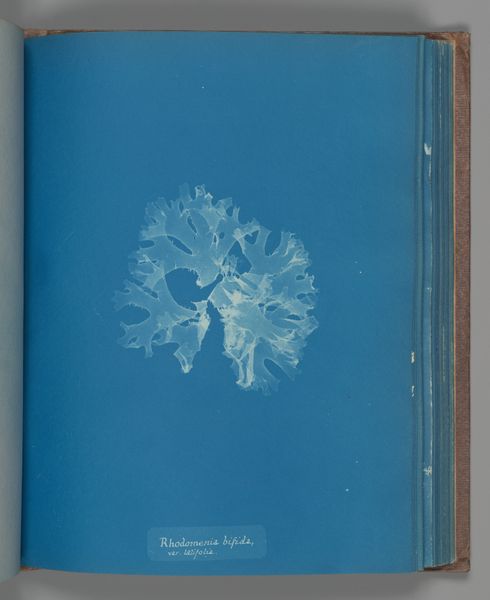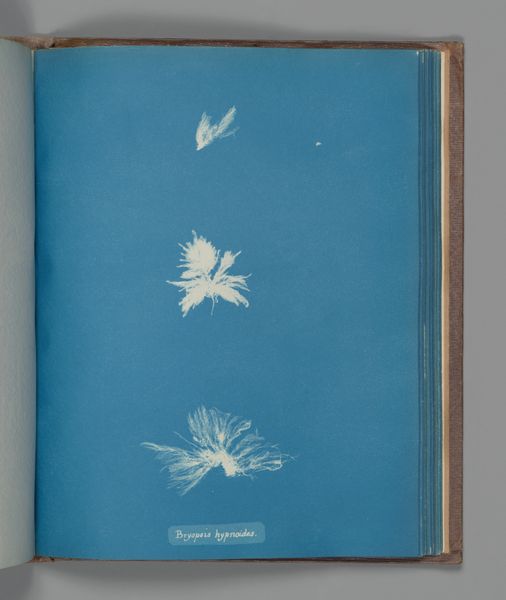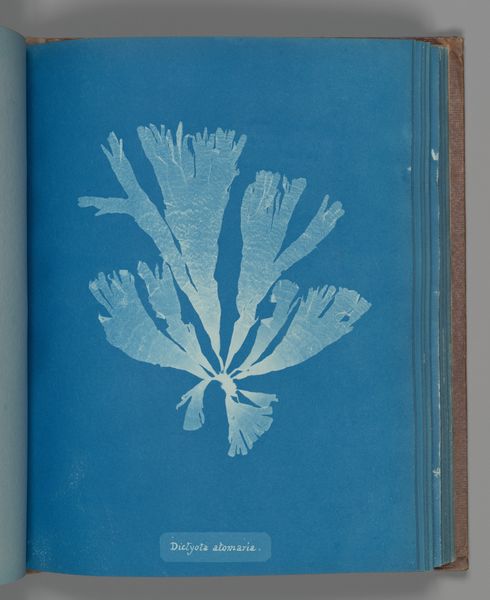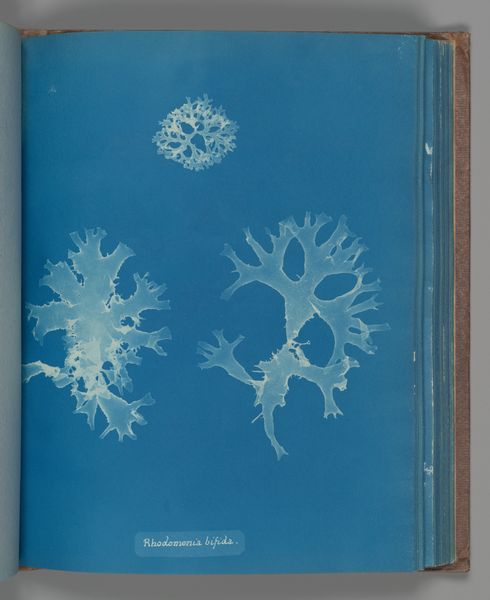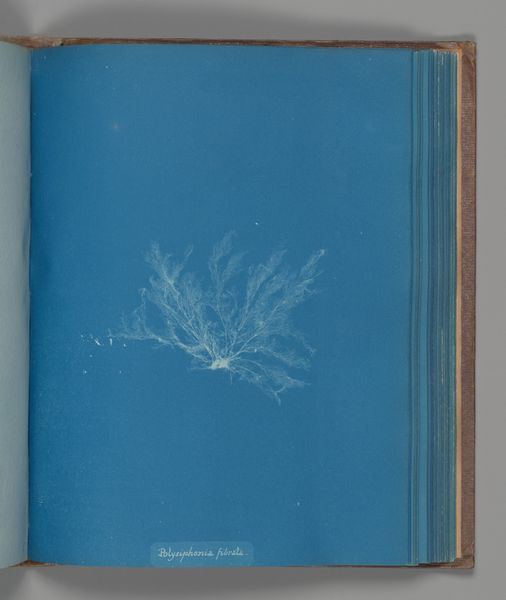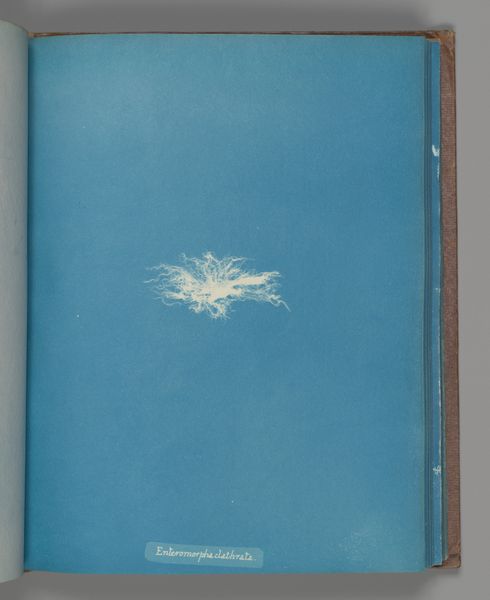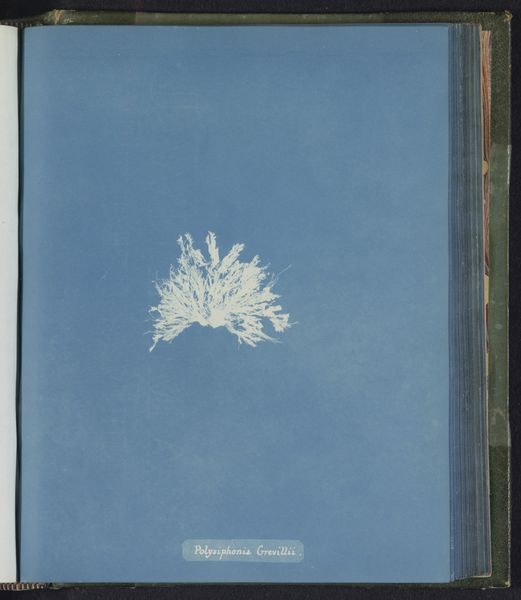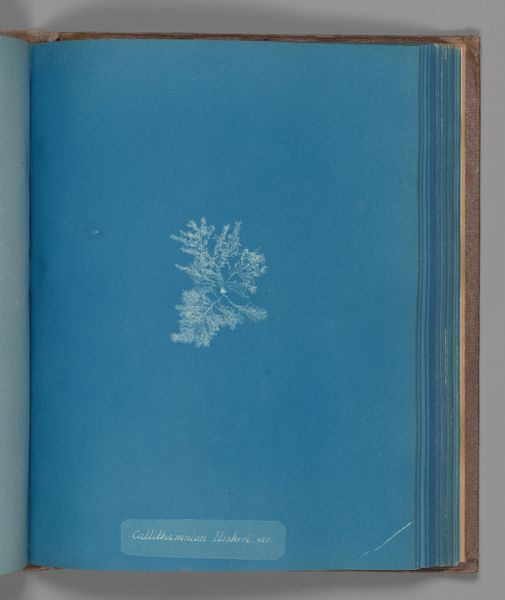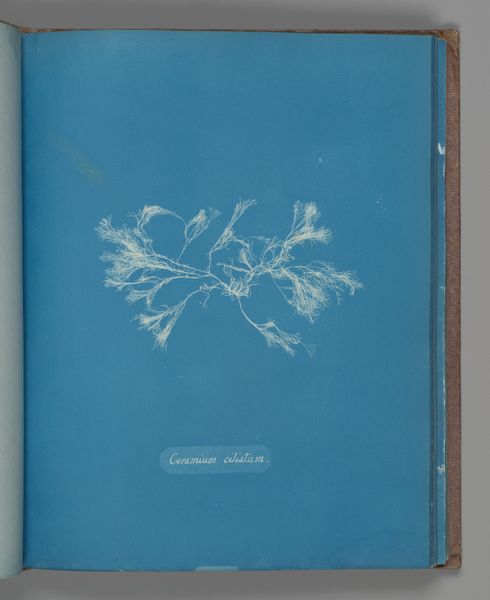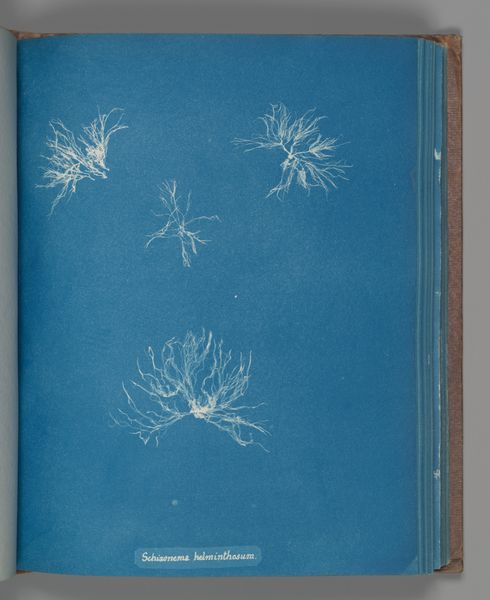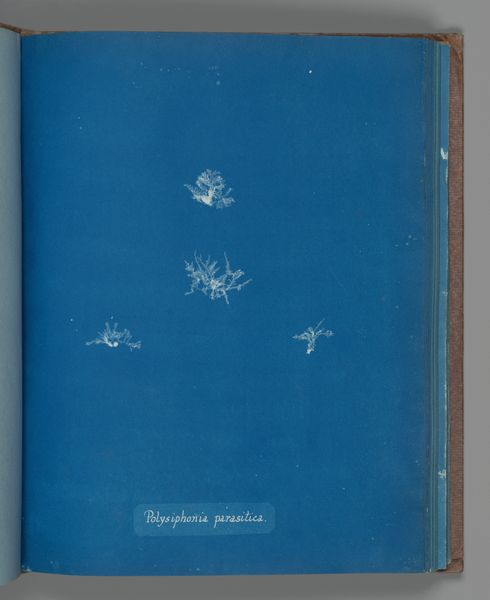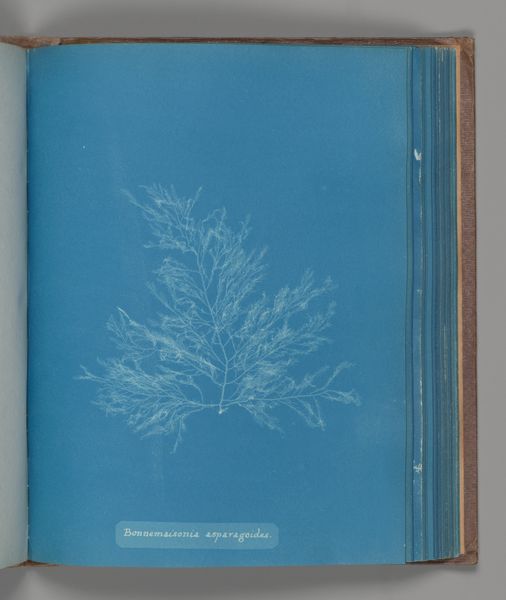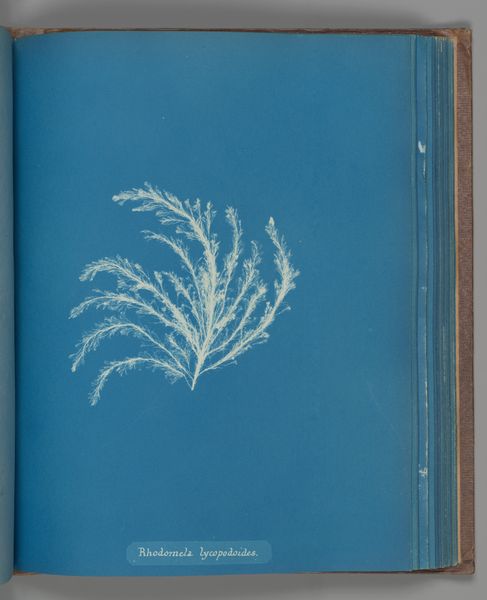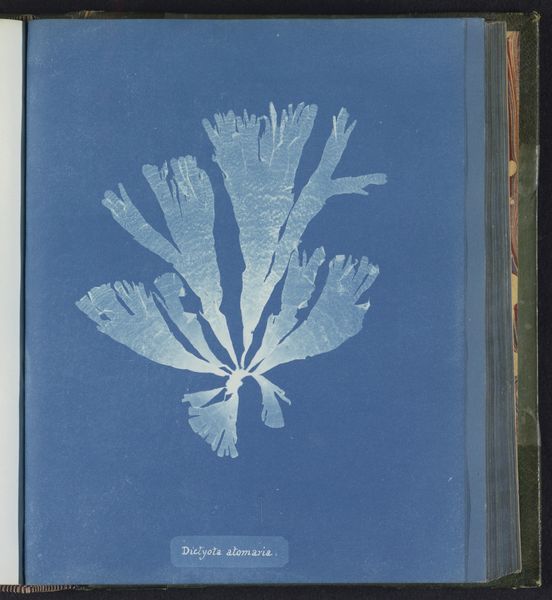
print, paper, cyanotype, photography
#
still-life-photography
# print
#
paper
#
cyanotype
#
photography
#
naturalism
Dimensions: Image: 25.3 x 20 cm (9 15/16 x 7 7/8 in.)
Copyright: Public Domain
Curator: This cyanotype, titled "Nitophyllum versicolor", was created by Anna Atkins between 1851 and 1855. It is a striking example of early photographic art. Editor: My first impression is one of spectral delicacy. The white seaweed forms against that intense blue remind me of botanical ghosts. There's something hauntingly beautiful about its stark simplicity. Curator: Precisely. Atkins utilized the cyanotype process, a relatively new technology at the time, to document botanical specimens with scientific precision. As a cyanotype, we see this specific vivid, almost unreal Prussian blue—achieved through light-sensitive iron salts and sunlight. Editor: And that very blue speaks volumes about the scientific mindset of the Victorian era. It mirrors the objective detachment that the scientific community projected to validate a claim to authority—dispassionately observing and cataloging nature with the nascent technologies available to them. There's a sort of confidence implied in her steady method. Curator: It's interesting you note that, as a lot of the photography produced by women like Atkins in this time—photography and related disciplines being relatively new fields—was sometimes overlooked precisely because of societal assumptions regarding its 'scientific value', despite clear commitment to accuracy. The symbolism there seems to be… Editor: It underscores how societal biases can subtly diminish significant contributions. However, by making impressions of seaweed, and explicitly linking it to science through photographic technology, perhaps she subtly challenged the conventional artistic norms and biases of the era? Curator: An excellent point! These photograms, more than mere recordings of sea flora, become declarations. Each meticulous detail signifies an almost reverential encounter. And perhaps as photography progressed—that same ‘neutrality’ she may have strived for would transform into its own kind of ideal in more artistically inclined movements too… Editor: It suggests that even objective scientific pursuit may possess its aesthetic vision and its own subjectivity—her hand in the creation forever binds her vision to the Nitophyllum she presents us. In her patient cataloging, Atkins transcends sterile scientific documentation, doesn’t she? Curator: Indeed, she offers an unexpectedly ethereal glimpse into the wonders of the natural world as well as a window into 19th century perceptions about observation, truth and knowing through recording. Editor: Her seaweeds, suspended in this cyanic dream, remind us of the intertwined destinies of art, science, and social change. The work endures, inviting contemplation from new generations.
Comments
No comments
Be the first to comment and join the conversation on the ultimate creative platform.
